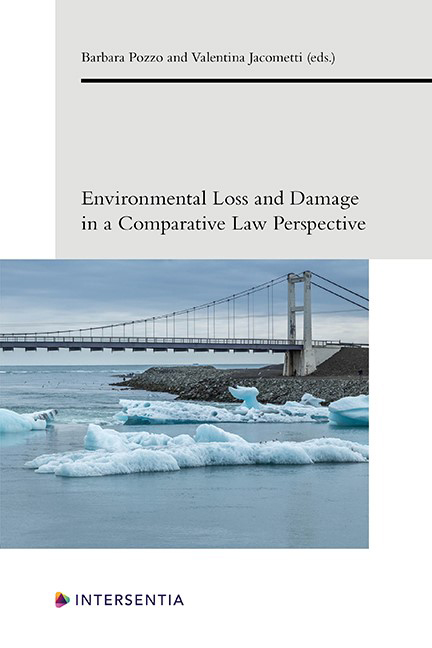Book contents
- Frontmatter
- Preface
- Contents
- List of Authors
- PART I LIABILITY FOR ENVIRONMENTAL HARM IN THE EU
- PART II PRIVATE AND CORPORATE ENVIRONMENTAL LIABILITY
- PART III THE ROLE OF CRIMINAL LIABILITY
- PART IV LEGAL TRANSPLANTS IN THE ENVIRONMENTAL FIELD: THE CASE OF ENVIRONMENTAL LIABILITY
- PART V STATE AND INTERNATIONAL ENVIRONMENTAL LIABILITY
- PART VI CLIMATE CHANGE LIABILITY
- PART VII LIABILITY, CLIMATE CHANGE AND NATURAL HAZARDS: THE ROLE OF INSURANCE
- PART VIII REAL COMPENSATION AND OFFSET REGIMES: THE STRATEGY OF “NO NET LOSS”
- About the Editors
The Myth of Plurality of Regimes in the Law of State Responsibility
Published online by Cambridge University Press: 26 May 2021
- Frontmatter
- Preface
- Contents
- List of Authors
- PART I LIABILITY FOR ENVIRONMENTAL HARM IN THE EU
- PART II PRIVATE AND CORPORATE ENVIRONMENTAL LIABILITY
- PART III THE ROLE OF CRIMINAL LIABILITY
- PART IV LEGAL TRANSPLANTS IN THE ENVIRONMENTAL FIELD: THE CASE OF ENVIRONMENTAL LIABILITY
- PART V STATE AND INTERNATIONAL ENVIRONMENTAL LIABILITY
- PART VI CLIMATE CHANGE LIABILITY
- PART VII LIABILITY, CLIMATE CHANGE AND NATURAL HAZARDS: THE ROLE OF INSURANCE
- PART VIII REAL COMPENSATION AND OFFSET REGIMES: THE STRATEGY OF “NO NET LOSS”
- About the Editors
Summary
INTRODUCTION
In international environmental law, as well as other branches of public international law, the state's responsibility for environmental harm might be engaged when a breach of an international obligation is attributable to the state. This is reaffirmed by the International Law Commission (ILC) – the United Nations’ body in charge of codification and progressive development of international law – in the Draft Articles on the Responsibility of States for Internationally Wrongful Acts (2001), Article 2.
However, the implementation of the regime of state responsibility for internationally wrongful acts (hereinafter referred to as “the common regime”) in cases of international environmental law faces some significant obstacles. The major obstacle is that of environmental damage arising while the state is complying entirely with its international obligations. In fact, the states are directly (as operators) or indirectly (because the activity occurs within their jurisdiction, in their territories or under their control) involved in a vast range of activities related to economic development. These activities involve, either by nature or accidentally, environmental risks. The main question then would be whether it is reasonable that victims – nature or human – have to bear their prejudicial consequences without at least a large participation of the state in the reparation. Answering negatively to this question, the doctrine was taken to underline the necessity of a complementary and sine delicto responsibility regime where the only condition would be the causal link between the damage and the conduct of the state.
Tempted by this idea, the ILC decided to undertake the codification of rules related to what was initially called “state responsibility for lawful acts”. Thus, between 1980 and 2006, the ILC had been working on “International liability for injurious consequences arising out of acts not prohibited by international law”. Observing the final outcomes, one can say that the ILC had failed to establish a second regime in the law of state responsibility. Indeed, both of the initial project's subdivisions, i.e. the Draft Articles on Prevention of Transboundary Harm from Hazardous Activities (2001) and the Draft Principles on the Allocation of Loss in the Case of Transboundary Harm Arising out of Hazardous Activities (2006) are far from being a parallel to the common regime. In fact, none of the texts make the states liable for the damage caused by hazardous activities despite licit conduct of the states.
- Type
- Chapter
- Information
- Environmental Loss and Damage in a Comparative Law Perspective , pp. 357 - 370Publisher: IntersentiaPrint publication year: 2021



